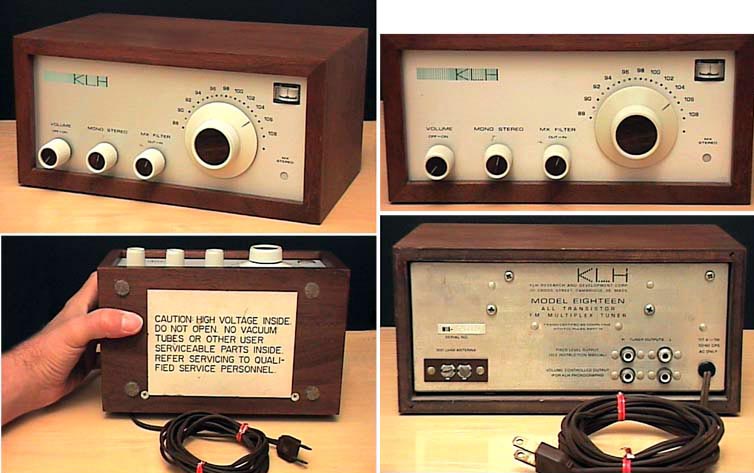HD Radio
HD Radio

In the Americas, HD radio is proposed for a transition from analogue to digital broadcast transmission. However, this is a system which is only possible in region 2 because there the land is vast and the relative density of the broadcast stations is low.
Moreover the transmit power of the AM stations is low too (10KW to 50KW max.), especially compared to the transmit powers used in region 1, Europe (500KW to 1MW max.).
As a consequence in region 2 the channel spacing is 10KHz for AM, and adjacent channels usually are clear at least at daytime. So there is no bigger problem to occupy up to 30KHz for an AM broadcast. In contrast broadcast bands in region 1 are overcrowded; channel spacing is 9KHz only and adjacent channels are busy.
HD is a concept to transmit analogue and digital information simultaneously. However, the digital transmission takes place in (parts of) the adjacent channels. In region 2 this will be possible even "at the discretion of the station manager", wheras in region 1 this is not. (This statement holds for AM HD and similar for FM HD).
HD radio is described in Wikipedia and here is a short excerpt about AM HD:
The AM version of HD Radio technology uses the 20 kHz channel (+/- 10 kHz), and overlaps 5 kHz into the opposite sideband of the adjacent channel on both sides. When operating in pure digital mode, the AM HD Radio signal fits inside a standard 20 kHz channel (20-40 kbit/s) or an extended 30 kHz channel (40-60 kbit/s), at the discretion of the station manager. As AM radio stations are spaced at 9 kHz (Europe) or 10 kHz (Americas) intervals, much of the digital information overlaps adjacent channels when in hybrid mode. Some nighttime listeners have expressed concern this design harms reception of adjacent channels with one formal complaint filed regarding the matter: WYSL owner Bob Savage against WBZ in Boston. The digital radio signal received on a conventional AM receiver tuned to an adjacent channel sounds like a large waterfall or similar white noise-like hiss, as can be heard in the audio soundclip referenced in the previous sentence. However, this sort of signal, at low levels, creates less annoying interference than other types of signal transmission methods.
Since in the regions 1 & 3 adjacent channels in the AM bands are busy, the DRM system has been proposed which confines the transmission to the dedicated channel.
A comparison of HD and IBOC systems can be found here (in German).
For digitalization of the FM band several concepts are under discussion, one of them is FM HD. The paper cited is in German, sorry.
Regards,
Dietmar
To thank the Author because you find the post helpful or well done.
HD vs Digital MW broadcast
This post was moved here on July 27th 2009 from Keine MW AM-Sender in Sachsen ab 2010, at the request of Prof Ing Dietmar Rudolph.
Regards,
-Joe
The German Google-translation of this post was deleted from this post on July 27th 2009 by request of RM Officer Ernst Erb.
If you can read this little bit of English, you may use Google-translate for the language of your choice.
Regards,
-Joe
Dear Prof Ing Rudolph,
Thanks for the update about the demise of AM broadcast in Saxony.
Here, in Massachusetts-USA, the AM band is still crowded with analog stations, most of which have talk-only program formats. Some broadcast music. Many of these stations also broadcast a digital signal with sidebands that spill outsided their original Amplitude Modulation spectrum. When the received signal is very strong, an HD-equipped radio can dramaticaly improve the sound, but the signal must be very strong. The improvement of HD on AM is comparable to what comes of an MP3 recording with fairly high compression. The artifacts are there, but they are still much better than the original AM.
Just last week I bought a SONY XDR-F1HD AM/FM tuner to receive the new HD digital signal on both bands, along with the analog version. I use the tuner in my office for analog FM reception, and it improved the noise level dramatically, as compared to the solid state KLH 18 tuner I was using.
Perhaps the only significant problem with the SONY XDR-F1HD is the high internal case temperature from the 13Watt dissipation in a small case that is not very well ventilated. I decided to solve the heat problem with a fanciful cooling fan that I slavaged from a dead microwave oven. The blue LED's run on two phases of 60Hz and make an animated pattern as their light pulses beat against the rotating blades.
The PCB's were test cards recycled from work, and the blue knob adjusts the fan speed for optimum animation in the light show; otherwise the fan could have been operated at fixed speed. My young colleague, engineer David Simmons, observed correctly that the fan slows down when the tuner is moved away from the fan. Air friction increases with the tuner removed. When the tuner is in place, the total air flow is reduced, and so is the air friction. This effect also happens when a vacuum cleaner intake is obstructed.
But I have a more serious proposal/question for Prof Ing Rudolph, and that is if he would like to comment on the architecture of the SONY tuner, or on the nature of American HD broadcast vs. European digital broadcast. There is a lot of material on the web about the SONY tuner.
Best regards,
-Joe
To thank the Author because you find the post helpful or well done.

